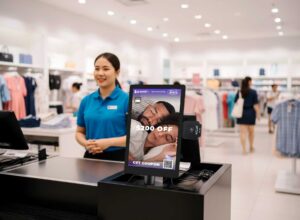 Contactless payment is a fast and convenient way to pay — you just tap or wave a card or smartphone near a card reader, and the transaction is complete. However, the U.S. has been slow to adopt this form of payment. In early February 2020, Juniper Research predicted that contactless payments in the U.S. would reach $178 billion in 2020, just a fraction of the anticipated global volume of $2 trillion.
Contactless payment is a fast and convenient way to pay — you just tap or wave a card or smartphone near a card reader, and the transaction is complete. However, the U.S. has been slow to adopt this form of payment. In early February 2020, Juniper Research predicted that contactless payments in the U.S. would reach $178 billion in 2020, just a fraction of the anticipated global volume of $2 trillion.
The coronavirus pandemic, though, has been an unlikely driver of contactless payment adoption and could change that outlook. Mastercard, for example, reported a 40 percent increase in contactless payments during Q1 2020.
The Appeal of Contactless Payments During Social Distancing
As the name implies, contactless payment takes contact, whether with other people, PIN pads, or cash, out of the picture. There isn’t any need to hand a credit card to a cashier, sales associate or restaurant server. The customer is the only person to touch the card or to handle a smartphone to use a mobile wallet.
With the heightened awareness that coronavirus may be on shared surfaces and is shared through human-to-human contact, contactless payment can eliminate some fears about making purchases in retail stores, restaurants — or through any merchant that accepts card-present payments.
How Contactless Payments Work
Contactless payment cards contain an RFID chip, often specifically based on near-field communication (NFC) technology, that communicates payment data with a contactless-enabled card reader.
The card must be within just a few centimeters of the reader to work, so the myth that thieves could scan contactless cards in crowds is unfounded. Furthermore, if someone could get within a few centimeters of your card and read it, perhaps on a crowded subway, they wouldn’t be able to capture enough information to charge to your account. Contactless cards use the same technology as EMV cards, creating a unique code for each transaction, making it difficult, if not impossible, to counterfeit a contactless card. Additionally, issuers layer on additional security measures, such as requiring a contact transaction after a set number of purchases or establishing a dollar limit before consumers must present their cards to the cashier.
Depending on the use case, contactless payment technology can also be leveraged for amusement park wristbands, key fobs, or stickers with an embedded chip to enable consumers to make payments securely and easily.
Smartphones that contain mobile wallets such as Apple Pay or Google Pay work similarly to cards or other objects containing the necessary chip. Customers unlock their phones, open their mobile wallet app, then wave or tap the phone to pay. Smartphones provide even more security by tokenizing data, giving the owner the ability to wipe or lock a stolen or lost phone, and requiring a passcode, pattern or fingerprint ID to unlock the phone and app.
Why Your Clients Need the Ability to Accept Contactless Payments Now
Consumers may be ready and eager to make contactless payment transactions, but whether they do fully depends on whether merchants accept them. When many merchants upgraded their payment technology to accept EMV chip cards, they gained the ability to accept contactless payments; however, they now need your help to enable that function. For merchants that haven’t upgraded their payment technology for the past several years, they’re more than due for a new solution — and you need to make sure it’s capable of accepting contactless payments.
As more U.S. consumers opt for contactless payments, motivated by following guidelines to help control the spread of coronavirus, they’ll expect the places where they commonly shop, dine and receive services to accept them. They may also perceive the merchants who do to care more about their health than those that still require human-to-human contact or touching shared surfaces during the payment experience.
As a trusted advisor, ensure your clients are in the best position to meet expectations, operate most safely, and enhance their clients’ experiences with the ability simply to tap and go.



